Get it now in our marketplace
|
 |
ActiveMQ: Apache ActiveMQ is a messaging and integration patterns server, allowing users to foster communication from more than one client or server. This communication is managed with features such as computer clustering and ability to use any database as a JMS persistence provider besides virtual memory, cache, and journal persistency.
|
 |
AlmaLinux 8 from OpenLogic by Perforce: This minimum profile AlmaLinux 8-based image, built by OpenLogic by Perforce, allows users to run the AlmaLinux image on Microsoft Azure, start an SSH server, and provides login access to customize the instance. This image includes 9×5 weekday email support delivered by a team of US-based Enterprise Linux experts.
|
 |
BiiTrails Business: This Microsoft Azure-based BiiTrails blockchain service provides self-service traceability toolkits. This service is low cost, with pay-by-use SaaS, and offloaded IT cost. It’s also easy to use, with permissioned usage, a GUI template editor, and admin dashboard.
|
 |
CentOS 7 from OpenLogic by Perforce: This minimum profile CentOS 7-based image, built by OpenLogic by Perforce, allows users to run the CentOS 7 image on Microsoft Azure, start an SSH server, and provides login access to customize the instance.
|
 |
CentOS 8 from OpenLogic by Perforce: This minimum profile CentOS 8-based image, built by OpenLogic by Perforce, allows users to run the CentOS 8 image on Microsoft Azure, start an SSH server, and provides login access to customize the instance.
|
 |
CentOS Stream: This is a minimal CentOS Stream image, mainly used as a common base system on top of which other appliances could be built and tested. It contains just enough packages to run within Microsoft Azure, bring up a SSH server and allow users to login.
|
 |
CentOS Stream Minimal: This is a minimal CentOS Stream image with an auto-extending root filesystem, mainly used as a common base system on top of which other appliances could be built and tested. Microsoft Azure Linux Agent, cloud-init, as well as the CentOS Stream security updates available at the release date are included.
|
 |
EspoCRM: This solution is an open source web application, which enables users to view, enter, and analyze their organization’s relationships with customers and as well as with partners. It’s fast and highly configurable and presents users with a web-based CRM platform.
|
 |
Explorium External Data Platform: This solution enables organizations to automatically discover and use thousands of relevant data signals to improve predictions and machine learning model performance. It also allows for efficient integration of third-party data.
|
 |
Exponent CMS: This Niles Partners image will configure and publish Exponent CMS, an open-source content management system written in PHP that helps you develop and easily manage dynamic websites without having to code pages or manage navigation.
|
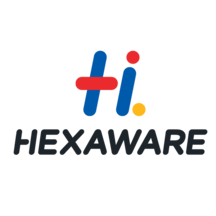 |
Intelligent Document Processing: Hexaware IDP uses Microsoft Azure cognitive services for automatic classification and extraction of data from scanned PDF and handwritten documents, improving accuracy by 80 percent and lowering cost by 30 percent.
|
 |
Kirby: This Niles Partners offer configures and publishes Kirby, a lightweight, file-based content management system. Kirby provides multilanguage and multistore functionality, so you won’t need plugins if you intend to set up your site for multiple countries or stores.
|
 |
Mantis: Get the big picture on your team’s performance and improve workflow and efficiency by deploying this Niles Partners image of Mantis, an open-source issue-tracking system and project management solution, to Microsoft Azure.
|
 |
MODX: MODX Revolution is a content management system and application framework rolled into one. Deploy it on Microsoft Azure via this Niles Partners image to gain peace of mind that your websites will be secure and easily maintained with unparalleled performance.
|
 |
Monica Server Ready with Support from Linnovate: Monica provides an easy-to-use interface to log everything you know about your contacts. Be a better friend, family member, and co-worker by having vital information like important dates or gift ideas at your fingertips.
|
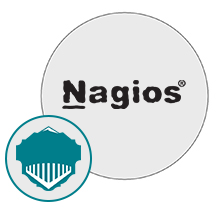 |
Nagios: This Microsoft Azure image from Niles Partners allows you to configure and publish Nagios Core, a user-friendly network monitoring solution for Linux operating systems and distributions that includes service state, process state, operating system metrics, and more.
|
 |
OpenDocMan: Configure and publish OpenDocman, an open-source document management system, to Microsoft Azure via this preconfigured image from Niles Partners. OpenDocMan supports multiple file types and offers a minimalist approach to user interface.
|
 |
osCommerce: This Microsoft Azure image from Niles Partners allows you to configure and publish osCommerce, an open-source e-commerce platform and online store management solution for any website or web server that has PHP and MySQL installed.
|
 |
PASOS – Paian Azure Spend and Optimization Service: PAIAN IT Solutions will monitor your Microsoft Azure consumption and give you suggestions for improving your Azure environment, allowing you to focus on your business processes, procedures, and employees.
|
 |
ProcessWire: Configure and publish ProcessWire, an open-source content management system, content management framework, and web application framework, via this preconfigured and ready-to-launch Microsoft Azure virtual image from Niles Partners.
|
 |
RabbitMQ: This open source messaging broker system from Niles Partners is used for distributing notifications of change events. It is lightweight and simple to deploy and provides applications a common platform for sending and receiving messages on Microsoft Azure.
|
 |
Rocky Linux 8 from OpenLogic by Perforce: Perforce provides this preconfigured image of Rocky Linux 8 from OpenLogic. This image enables users to run Rocky Linux image on Microsoft Azure, start a Secure Shell (SSH) server, and customize the instance.
|
 |
Ruby on Rails: Niles Partners is configuring Ruby on Rails, a world-famous open source web application framework, and embedding it with Ubuntu and ready-to-launch image on Microsoft Azure. You can use this high-level programming language to build database-backed web applications ranging from easy to complex.
|
 |
Spree Commerce: Easily launch, maintain, and scale your online stores across various platforms using this robust e-commerce solution embedded with Ubuntu along with ready-to-launch image on Microsoft Azure. Spree Commerce contains Linux, java, and Ruby Rails.
|
 |
Strapi Accelerator: This premium image designed by Ntegral and optimized for production environments is an open-source headless content management system (CMS). Strapi Accelerator is an image based on Ubuntu 20.04.2 LTS, PostgreSQL 12, Nginx, PM2, and Strapi.
|
 |
Syntheticus.ai-Synthetic Data Generator: This B2B SaaS solution by Syntheticus GmbH allows you to synthetically generate data for all your AI and machine learning models. This artificially generated, yet anonymized data, mimics the original data and strengthens your foundation of trust, while mitigating privacy risks.
|
 |
WildFly: Niles Partners provides this preconfigured, ready-to-launch virtual machine image of Wildfly for Microsoft Azure. WildFly application builder is a lightweight, flexible tool that runs tremendously fast with a full J2EE stack including Java EE7.
|
Go further with partner consulting services
|
 |
App Modernization with AKS: 5-Day Implementation: Modernize your business applications with this fully managed Azure Kubernetes Service (AKS) offered by Abtis GmbH. This implementation, available only in German, will help provision your first Kubernetes cluster infrastructure and introduce you to DevOps tools.
|
 |
Application Modernization: 4-Week Assessment: Cegeka’s four-week assessment serves as a starting point for defining your digital strategy and delivering an actionable IT roadmap and high-level application overview for modernizing your applications using Microsoft Azure.
|
 |
Azure Data Platform: 2-Week Proof of Concept: Learn how to remove existing barriers between operational data, data warehouses, and analytics while gleaning actionable insights in this offer from Techedge. Their experts will deliver a proof of concept of an integrated data platform centered on Microsoft Azure Synapse Analytics and Power BI.
|
 |
Azure Development Training: 1-Day Workshop: UPPER-LINK’s training workshop will help you identify options as you set out to modernize your existing applications based on your business requirements and develop the operational bricks for your project using Microsoft Azure services and tools. This offer is available only in French.
|
 |
Azure DevOps Quickstart: 3-Day Proof of Concept: This offer from Ismile Technologies will help your organization understand core concepts of the Azure DevOps platform and streamline processes so you can learn to quickly launch your first app using Microsoft Azure.
|
 |
Azure FastStart Service: 5-Day Implementation: Accelerate your journey to the cloud by collaborating with CANCOM consultants who will help deliver the base configuration of a Microsoft Azure environment to your organization. Set up subscriptions, identity, and security as part of this implementation.
|
 |
Azure GlidePath for Governance Workshops: Sirius’ workshop is based on Microsoft’s Azure Cloud Adoption Framework (CAF) and is geared toward helping your organization simplify the complex task of creating a governance program service by establishing a best-practice approach to security, governance, and cost control.
|
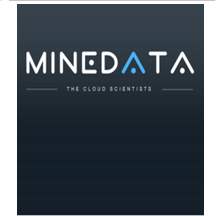 |
Azure Infrastructure & Data: 10-Day Assessment: In this assessment, MineData will provide an end-to-end analysis of your organization’s entire IT estate along with a cost overview for migrating your virtual machines, storage, and databases to Microsoft Azure.
|
 |
Azure Migration Readiness: 5- to 6-Week Assessment: Experts from Ismile Technologies will help you migrate to Microsoft Azure by first determining the cloud maturity of your company. An analysis of your current infrastructure, creation of a migration roadmap based on key metrics and dependencies will be offered as a follow-up service.
|
 |
Azure Migration: 5-Day Implementation: Is your organization looking to adopt a cloud strategy? Through this implementation, the experts at Abtis will migrate your ten most important Windows and SQL Server-based workloads to Microsoft Azure. This offer is available only in German.
|
 |
Azure Service Advisory: 4-Week Assessment: In this offer experts from Entelect will help you understand the myriad offerings and technologies that are part of Microsoft Azure’s evolving landscape. You will get a custom plan outlining which solutions within the Azure framework work best for your business needs.
|
 |
Azure Stack Hub: 4-Week Implementation: myCloudDoor consultants will help you build and run applications in an autonomous cloud that is completely or partially disconnected from the internet. Gain flexibility and control and easily transfer your app models between Microsoft Azure and Azure Stack Hub.
|
 |
Azure Synapse Analytics: 2-Hour Workshop: Get a free education on the Microsoft Azure Synapse Analytics solution from the experts at Altron Karabina so you can identify where this solution can be utilized in your organization. This workshop will help you create a reliable data foundation for your business questions.
|
 |
Azure Virtual Desktop Journey: 2-Hour Briefing: In this free briefing, ACP IT Solutions will discuss the benefits of Azure Virtual Desktop, cover infrastructure and costs, identify automation opportunities, and more. This offer is available only in German.
|
 |
Azure Virtual Desktop: 1-Day Quick-Start Workshop: Appsphere’s consultants will show you how Microsoft Azure Virtual Desktop works and the advantages it offers to you and your company. A comprehensive proof of concept will be provided so you can enable a secure remote desktop experience from virtually anywhere.
|
 |
Azure Virtual Desktop: 4-Day Implementation: IT sure GmbH will analyze your current environment and optimize it for Microsoft Azure Virtual Desktop, enabling you to manage demanding environments such as CAD workstations. This offer is available only in German.
|
 |
Azure Virtual Desktop: 4-Week Implementation: As part of their managed service the experts from Long View Systems will help design and deploy Microsoft Azure Virtual Desktop so your organization can close the skills gap and enable a secure remote desktop experience from virtually anywhere.
|
 |
Azure-Driven ML & Data Science: 4-Week Proof of Concept: Arinti will help guide you through your Microsoft Azure AI journey in this four-week engagement. Deliverables include a data audit report, roadmap for future AI implementations, estimate to scale the proof of concept to a production environment, and more.
|
 |
Cloud Data Migration: 2-Day Workshop: Available only in German, Saracus Consulting’s workshop will teach you how to successfully migrate your on-premises database to Microsoft Azure. Learn how you can benefit from the elasticity and agility of Azure services.
|
 |
Cloud Readiness: 5-Day Assessment: Looking to migrate your applications to the cloud? Cegeka’s five-day Cloud Readiness assessment will help you create a strategic roadmap to ensure you accomplish a successful migration to Microsoft Azure.
|
 |
CloudTrack Governance Journey: 3-Day Workshop: Atea’s CloudTrack Governance Journey includes three workshops utilizing Microsoft Azure best practices and Atea’s experience configuring Azure environments as a proven method for successfully moving your organization to the cloud.
|
 |
Costs Optimization: 2-Week Assessment: Available only in Spanish, Orion 2000’s Cost Optimization assessment includes an analysis and evaluation of your organization’s Microsoft Azure environment to help you reduce unnecessary costs and identify potential savings.
|
 |
Data & Analytics Strategy: 5-Day Assessment: Obungi experts will help you use your data as a driver of success by looking at the state of your system, identifying strengths and weaknesses, and jointly developing a target landscape and roadmap based on Microsoft Azure services.
|
 |
Data Architecture: Half-Day Workshop: Learn how to more effectively use your data via Microsoft Azure and this free, individually tailored consultation. Experts from Zoi TechCon with work with you to look at integration, metadata, and governance best practices for your data architecture.
|
 |
Data Platform Modernization: 10-Week Implementation: This consultation with Business Integration Partners will assess your infrastructure and applications, define future scenarios, and implement a solution for data platform modernization to accelerate your digital transformation.
|
 |
Data Warehouse – Synapse Analytics: 1-Day Workshop: Learn from the experts at Obungi how a modern data warehouse based on Microsoft Azure Synapse Analytics can combine traditional data warehousing with big data and data science to uncover hidden insights and make informed decisions.
|
 |
DataCenter Modernization 6-Week Implementation: Get help moving to Microsoft Azure with this consulting offer from IT Quest Solutions. You will receive a technical assessment, a cost analysis, and a migration plan detailing how to move your workloads to the cloud.
|
 |
DevOps Consulting: 2-Week Assessment: This consultation with RCR will improve how you produce and operate applications in Microsoft Azure DevOps through the effective execution of processes, practices, and use of tools that automate the development cycle.
|
 |
External Identity Access Management: 1-Day Briefing: Avaleris will provide high-level recommendations for an optimal path toward deployment of external identity solutions that will protect your organization from threats and ease onboarding for partners and customers.
|
 |
Infrastructure Provisioning: 2-Week Assessment: LTTS will help you plan automated infrastructure provisioning using Terraform or Microsoft Azure Resource Manager (ARM) templates, reducing the time it takes you to provision cloud resources from weeks to minutes.
|
 |
Intelligent Spaces: 4-Week Assessment: GlobalLogic will assess your office space management system and propose an improved or new solution based on Microsoft Azure, Dynamics 365, and Power BI that will enable people to be in a more safe and comfortable environment.
|
 |
Introduction to Azure Purview: 1-Day Workshop: This consultation will use practical examples to show the functions and benefits of Microsoft Azure Purview unified data governance service for the different user groups in your company. This offer is only available in German.
|
 |
Linux Migration: 5-Day Implementation: Get professional migration for your Linux and open source database workloads. Abtis will migrate your ten most important workloads on the basis of Linux and open source databases to Microsoft Azure safely and quickly. This offer is only available in German.
|
 |
Machine Learning: 1-Day Workshop: Learn about the functionality and advantages of machine learning with AppSphere’s offering. Get an overview of the terminology and basic statistical methods and create self-learning data sets with Microsoft Azure Machine Learning Studio.
|
 |
Modern Workplace Jumpstart: 1-Week Workshop: AppSphere‘s consultants will develop an IT architecture/landscape that is heavily based on Microsoft cloud solutions like Office 365 and Azure services, to meet demands for mobility, collaboration, and communication.
|
 |
Oracle Migration to Azure: 2-Hour Briefing: This offering from Dimension Data will introduce you to managing and optimizing your Oracle footprint and technology costs by migrating your Oracle workloads to Microsoft Azure (Oracle on Azure) or to PostgreSQL on Azure.
|
 |
Oracle/PostgreSQL Migration: 6-Week Assessment: AKVELON will perform this migration to Microsoft Azure PostgreSQL database infrastructure with an option to use state-of-the-art server solutions. Additional services to migrate the application infrastructure are available.
|
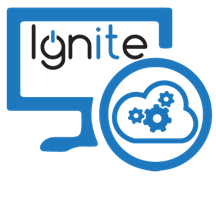 |
Quick Azure Virtual Desktop: 4-Week Implementation: Ignite’s offering consists of a structured service that will allow a customer to perform a fast standard deployment of an environment of virtualized desktops and applications running in the Microsoft Azure cloud.
|
 |
SAP on Azure: 2-Week Assessment: Reply AG will assess and plan an individual migration to Microsoft Azure based on customer needs, combined with its extensive experiences with SAP systems. This offer will bring best practices and individual class together.
|
 |
StoreSimple: 4-Week Implementation: Extended support for Microsoft Azure StorSimple will cease in December 2022. SoftJam will analyze your StorSimple usage pattern and identify the best IaaS/PaaS/SaaS solution to replace it, granting the same level of reliability.
|
 |
Veeam Cloud Backup for Microsoft 365: 4-Week Implementation: Sentia’s offering follows recommendations and best practices from the Microsoft Cloud Adoption Framework for Azure. It implements the concept of an Azure landing zone, providing the foundation for additional Azure workloads.
|
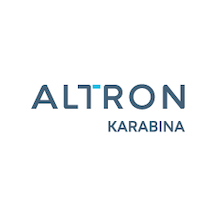 |
Win with Analytics – Azure Synapse: 2-Week Proof of Concept: Altron Karabina will help build “one analytic view’ using Microsoft Azure Synapse Analytics that can impact your business now. Get a high-level analysis and the creation of a one-page statement of success document.
|
Contact our partners
|
ADiTaaS IT Service Management
|
Amdocs Service and Network Automation Solution
|
Arimac FinTech Suite
|
Automated Data Harmonization
|
Axway Managed File Transfer
|
Azure Sentinel from Atos
|
Azure Sentinel Managed Service
|
BAYZYEN
|
bonbon shop
|
BusinessNow
|
CallMiner Eureka
|
CarnaLife System
|
Clinicone Telemedicine
|
CODA Footprint Cloud Appliance
|
Codestone Managed Services Offering
|
CogEra
|
Data Leak Prevention: 4-Hour Workshop
|
DeviceOn/Kiosk+ with Anomaly Detection Service
|
DNS Guard
|
Document Locator
|
EDGYneer
|
eGovern File Share Migration to Microsoft 365
|
Enlabeler Annotate
|
ESET PROTECT
|
ESET PROTECT for MSP
|
Eugenie AI
|
Exterro Forensic Tool Kit Single Server
|
Exterro FTK Central 7.4 for Microsoft Azure
|
Exterro FTK Enterprise for Microsoft Azure
|
Exterro FTK Lab for Microsoft Azure
|
EY Modern Finance
|
FortiGate Next-Generation Firewall for Azure Stack
|
IDEMIA Smart Connect Consumer
|
IDEMIA Smart Connect M2M
|
IFS Cloud
|
Infosys Modernization Suite
|
INTAIN Structured Finance
|
Kofax SignDoc Cloud
|
Kofax TotalAgility
|
mcframe SIGNAL CHAIN
|
Multiple Choice Quiz Corrector API
|
NetApp Cloud Backup
|
Nuboj
|
ogamma Visual Logger for OPC IoT Edge Module
|
paydash
|
SmartOMS v1
|
SOH_Sintra Omnichannel Hub
|
SolarWinds SQL Sentry
|
Tripwire IP360 (Device Profiler Ev) 9.2.1
|
Tripwire IP360 (VnE Manager Ev) 9.2.1
|
Vector Center Perception Reality Engine
|













































































Recent Comments